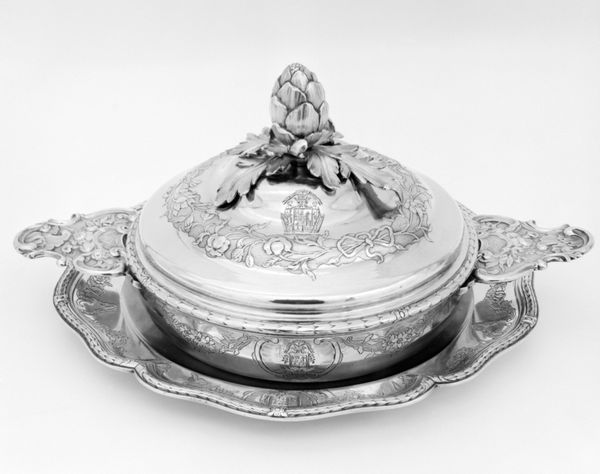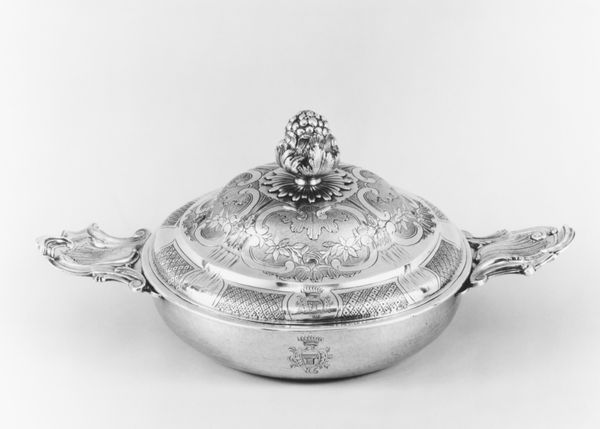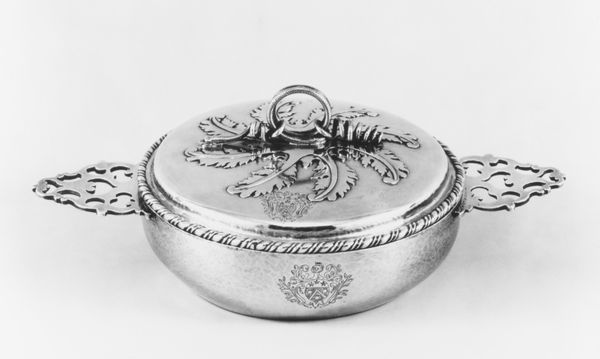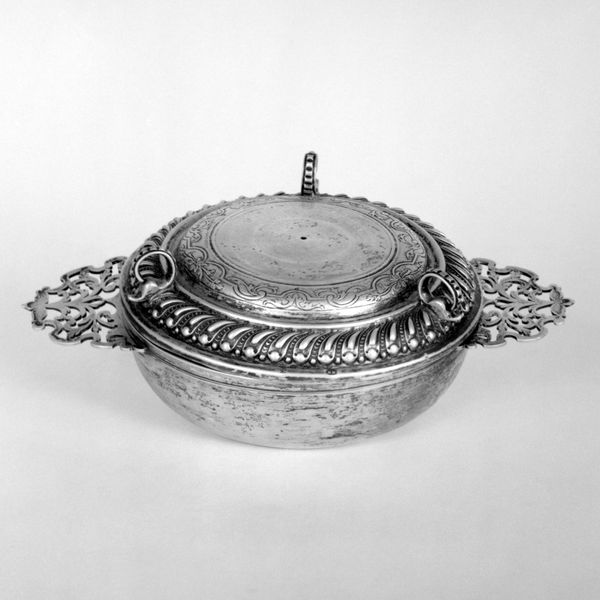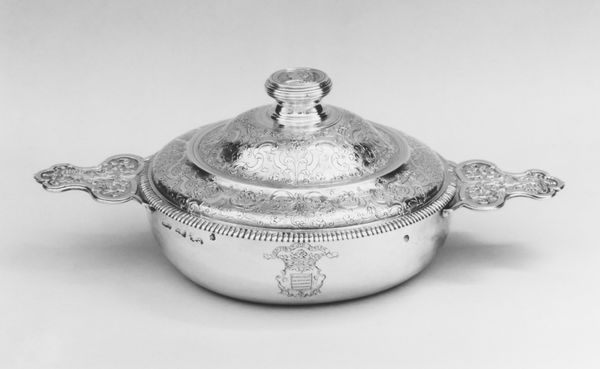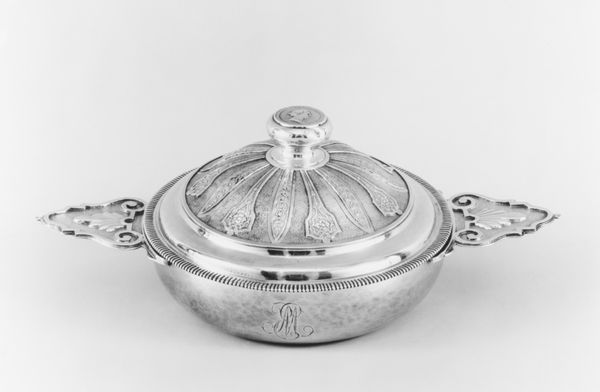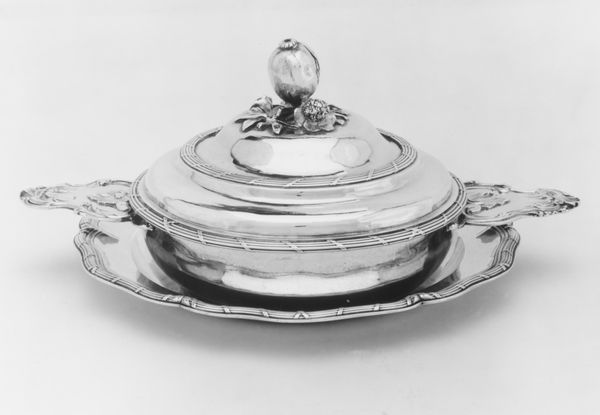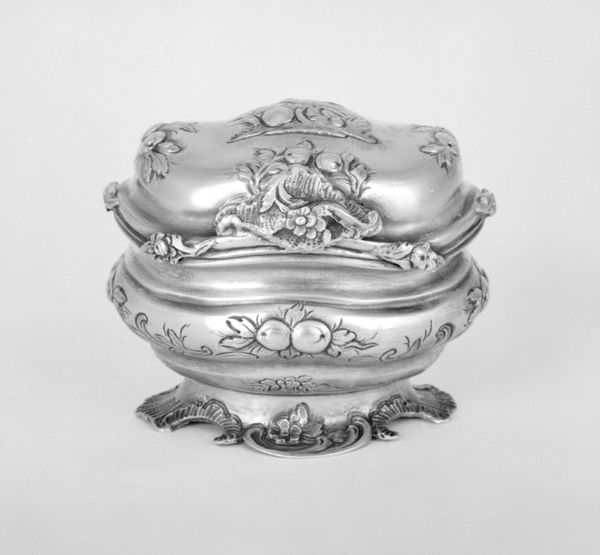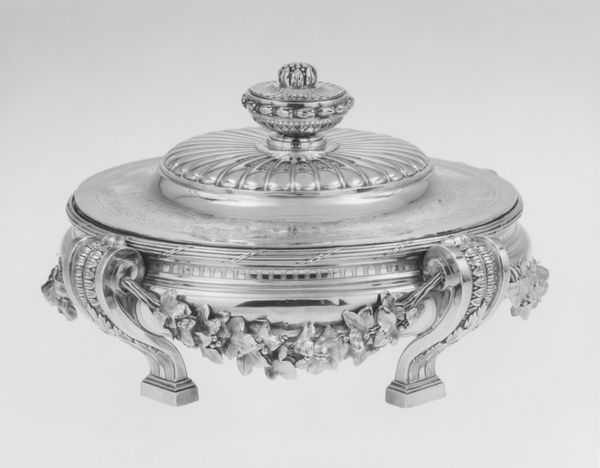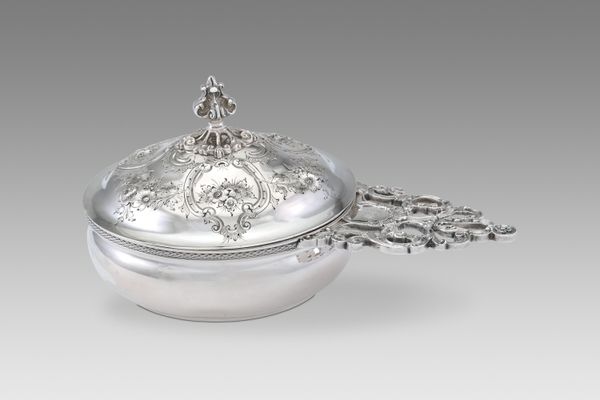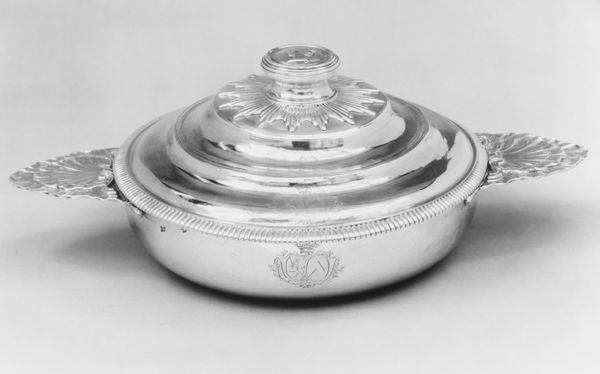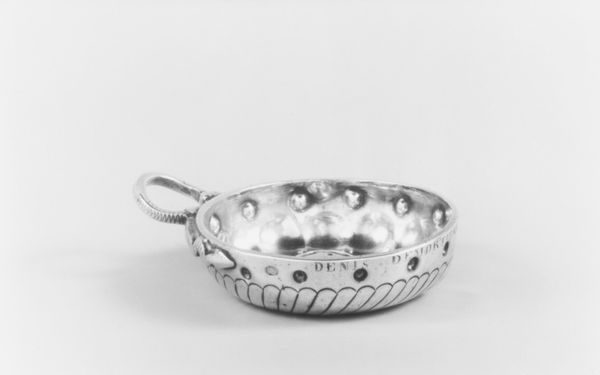
silver, metal, sculpture
#
silver
#
baroque
#
metal
#
sculpture
#
decorative-art
Dimensions: Overall: 5 9/16 × 7 1/2 × 12 9/16 in. (14.1 × 19.1 × 31.9 cm)
Copyright: Public Domain
Curator: What strikes me immediately is this gleam—it just radiates pampered elegance. Editor: Absolutely, a relic of a bygone era, if you will. This is a silver broth bowl with a cover, also known as an écuelle. It was crafted between 1749 and 1750, and the silversmith behind it was Éloi Guérin. We find it now at the Metropolitan Museum of Art. Curator: Éloi Guérin, eh? I'm getting Versailles vibes, like Marie Antoinette should be ladling something delicately pink out of it. Tell me, what’s the activist angle here? Is there one for a soup bowl? Editor: Well, more generally, it helps us question notions of accessibility to certain experiences and art historical movements such as the Baroque. Think of the resources—human labor, the silver itself, and so on. Consumption like this supported entire political and economic systems predicated on deep social inequity. Who got broth, and who did not? Curator: You've definitely soured my taste for fancy soup! Although, I suppose there's beauty, and then there's context. Editor: Exactly. Consider the materiality of the silver itself: its extraction, trade routes, colonial contexts...even its value system implies the marginalization of other materials and forms of creation. But even so, as art, it is dazzling and impeccably crafted. It has this way of revealing tensions. Curator: Dazzling and decadent, I like it. The handles—almost like baroque flourishes reaching out, don't they remind you of stylized water lilies or maybe even weeping willow branches? It's ornate, almost delightfully absurd, the way it elevates such a mundane, comforting activity such as enjoying a bowl of soup. Editor: Absolutely. The excess can be jarring, but it also throws a light on its socio-political circumstances, demanding we consider those excluded from such elaborate displays. A lot can be stirred up with something as simple as a broth bowl, wouldn’t you agree? Curator: Absolutely. There’s almost an audacity in its beauty. Thanks to this piece, and our discussion, I'm starting to feel quite hungry and strangely provoked! Editor: Indeed. This écuelle serves as both a beautiful object and a lens through which we can critically examine societal dynamics of 18th-century Europe, so art still teaches.
Comments
No comments
Be the first to comment and join the conversation on the ultimate creative platform.
